MTX-13, a Novel PTK7-Directed Antibody-Drug Conjugate with Widened Therapeutic Index Shows Sustained Tumor Regressions for a Broader Spectrum of PTK7-Positive Tumors
- PMID: 37352387
- PMCID: PMC10544008
- DOI: 10.1158/1535-7163.MCT-23-0164
MTX-13, a Novel PTK7-Directed Antibody-Drug Conjugate with Widened Therapeutic Index Shows Sustained Tumor Regressions for a Broader Spectrum of PTK7-Positive Tumors
Abstract
Protein tyrosine kinase 7 (PTK7) is a Wnt signaling pathway protein implicated in cancer development and metastasis. When using a potent microtubule inhibitor (Aur0101), PTK7-targeting antibody-drug conjugate (ADC), h6M24-vc0101 (PF-06647020/cofetuzumab pelidotin) is efficacious only in limited tumor types with low response rates in a phase I trial. To improve patient response and to expand responding tumor types, we designed MTX-13, a PTK7-targeting ADC consisting of a novel antibody (Ab13) conjugated to eight molecules of topoisomerase I inhibitor exatecan through T1000, a novel self-immolative moiety. MTX-13 exhibited PTK7-specific cell binding, efficient internalization, and exatecan release to cause cytotoxic activity through DNA damage and apoptosis induction, and a strong bystander killing. MTX-13 displayed potent antitumor activities on cell line-derived xenograft and patient-derived xenograft models from a wide range of solid tumors, significantly outperforming h6M24-vc0101. PTK7 was shown to be an actionable target in small cell lung cancer for which MTX-13 showed complete and durable responses. With a consistent overexpression of PTK7 in squamous cell carcinomas derived from diverse anatomic sites, strong potency of MTX-13 in this group of heterogenous tumors suggested a common treatment strategy. Finally, MTX-13 inhibited tumor growth and metastasis in an orthotopic colon cancer xenograft model. MTX-13 displayed a favorable pharmacokinetic and safety profile in monkeys with the highest non-severely toxic dose (HNSTD) of ≥30 mg/kg, significantly higher than 3-5 mg/kg of HNSTD for h6M24-vc0101. The higher therapeutic index of MTX-13 bodes well for its clinical translation with the potential to expand the responding patient population beyond that of current PTK7-targeting ADCs.
©2023 The Authors; Published by the American Association for Cancer Research.
Figures

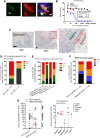
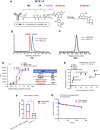
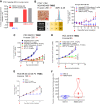
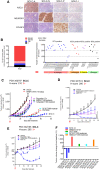
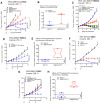
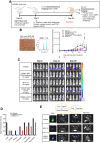
References
-
- Niehrs C. The complex world of WNT receptor signalling. Nat Rev Mol Cell Biol 2012;13:767–79. - PubMed
-
- Karvonen H, Perttila R, Niininen W, Barker H, Ungureanu D. Targeting Wnt signaling pseudokinases in hematological cancers. Eur J Haematol 2018;101:457–65. - PubMed
-
- Ataseven B, Angerer R, Kates R, Gunesch A, Knyazev P, Hogel B, et al. PTK7 expression in triple-negative breast cancer. Anticancer Res 2013;33:3759–63. - PubMed
Publication types
MeSH terms
Substances
LinkOut - more resources
Full Text Sources
Other Literature Sources
Miscellaneous

